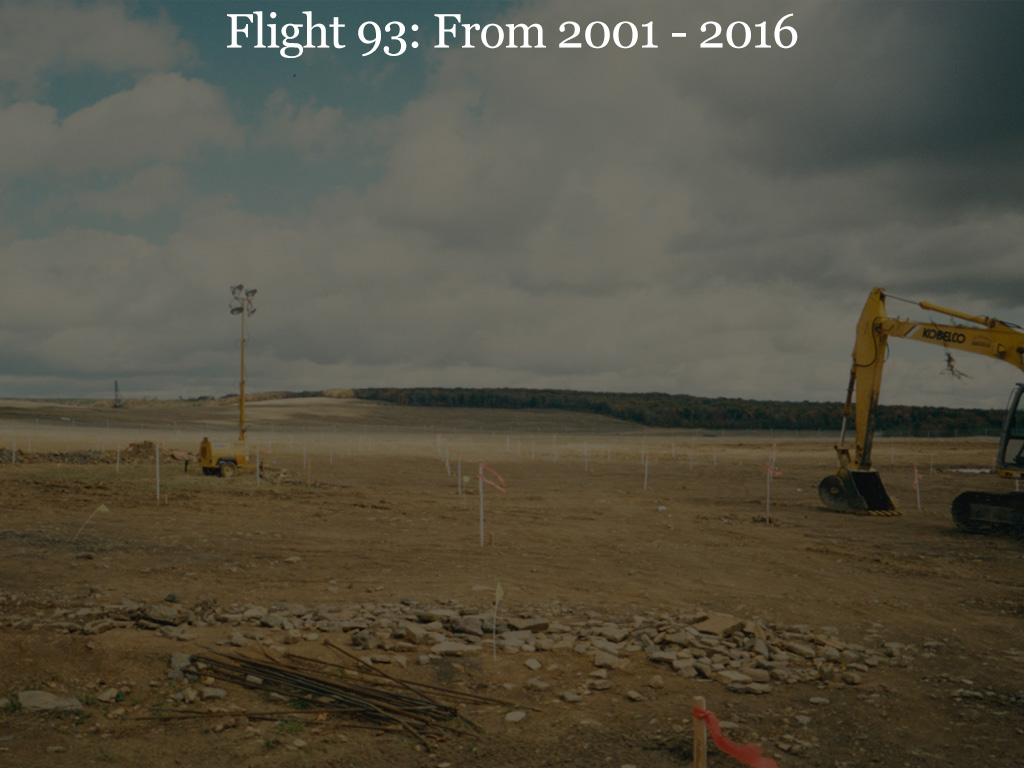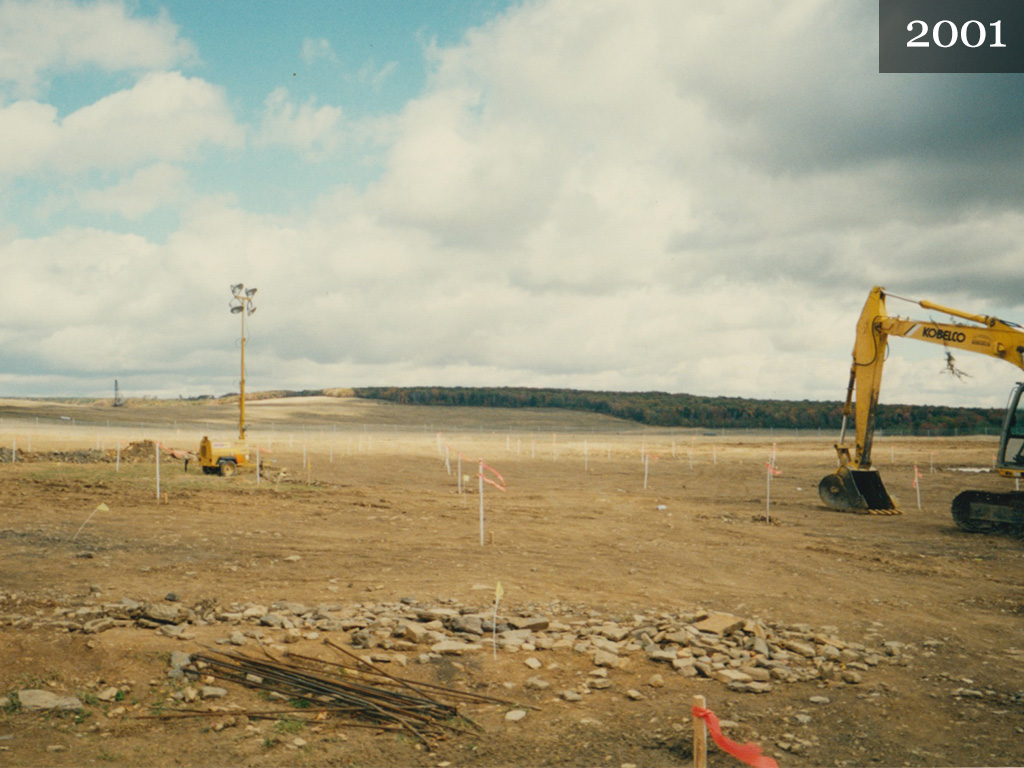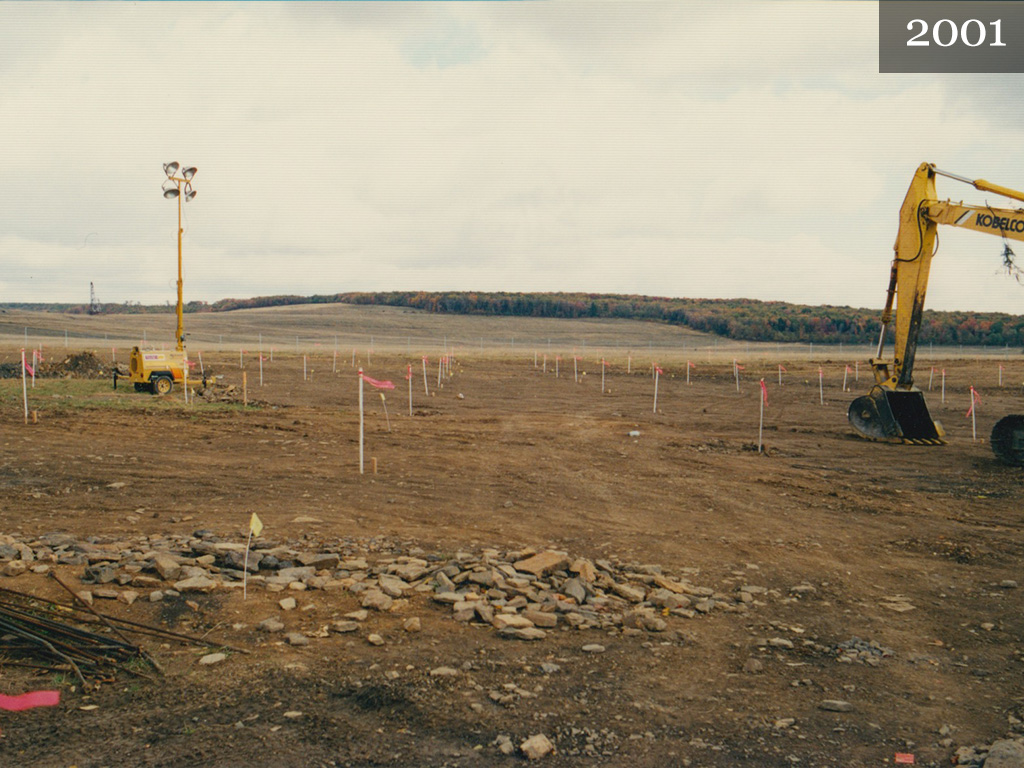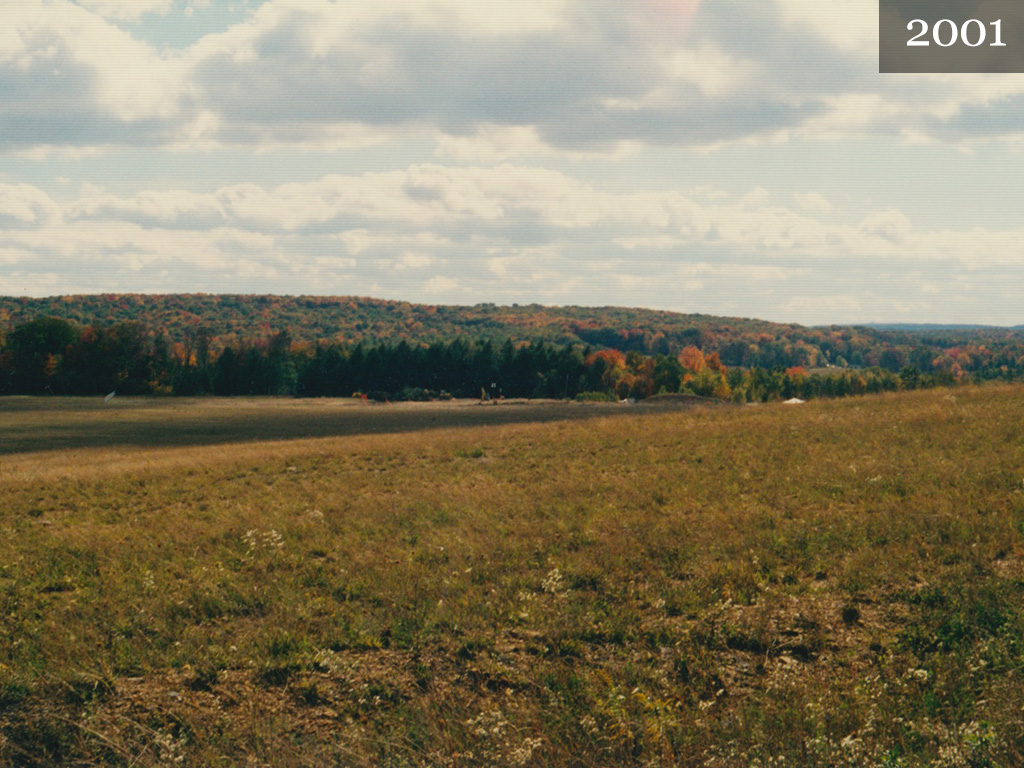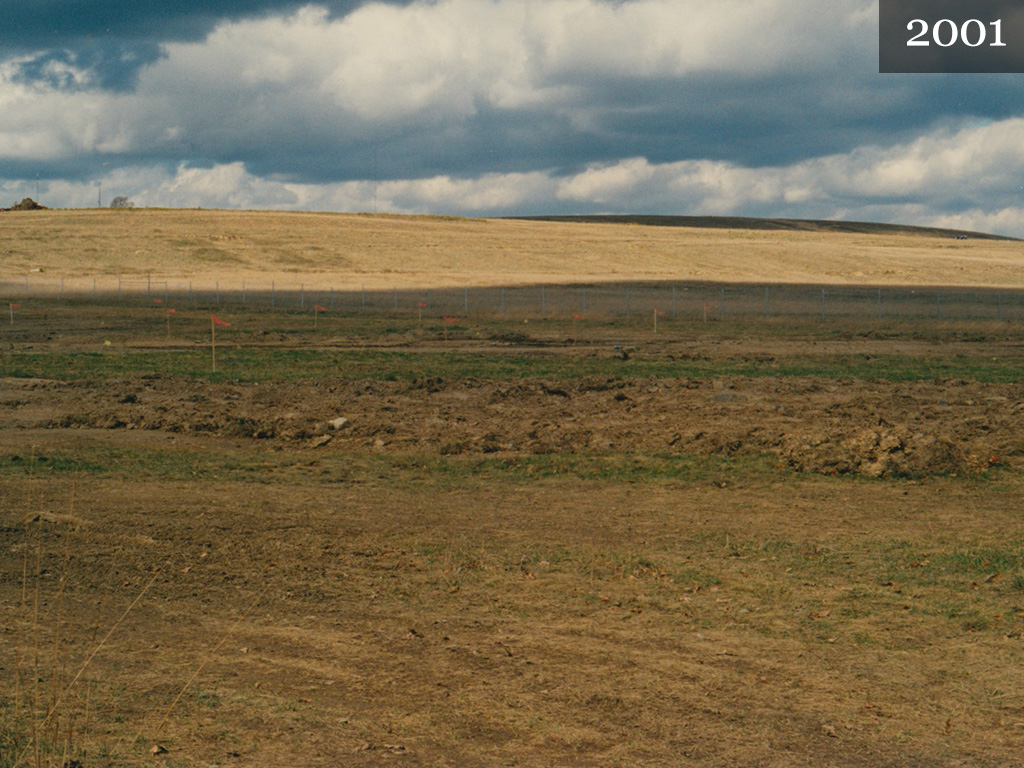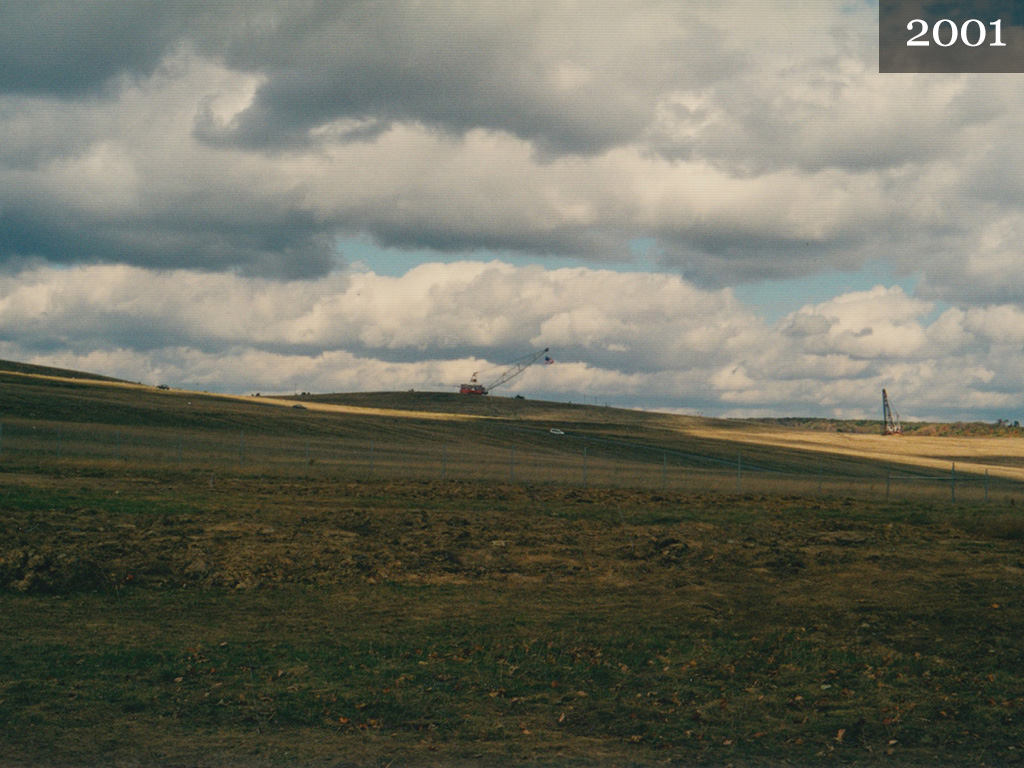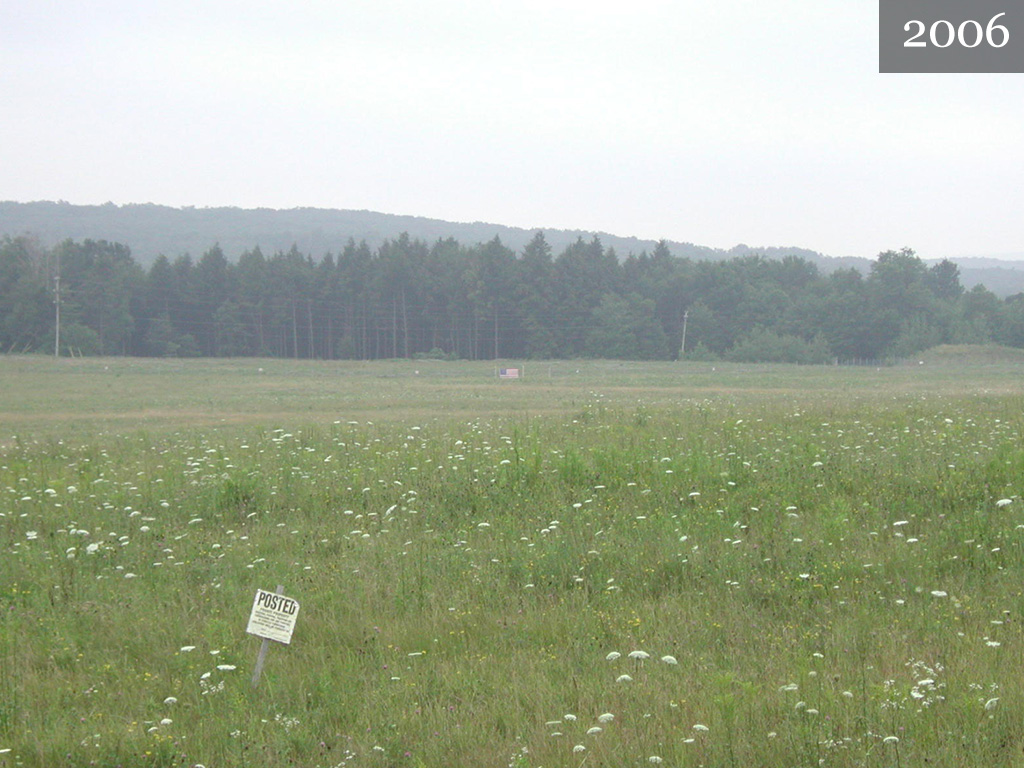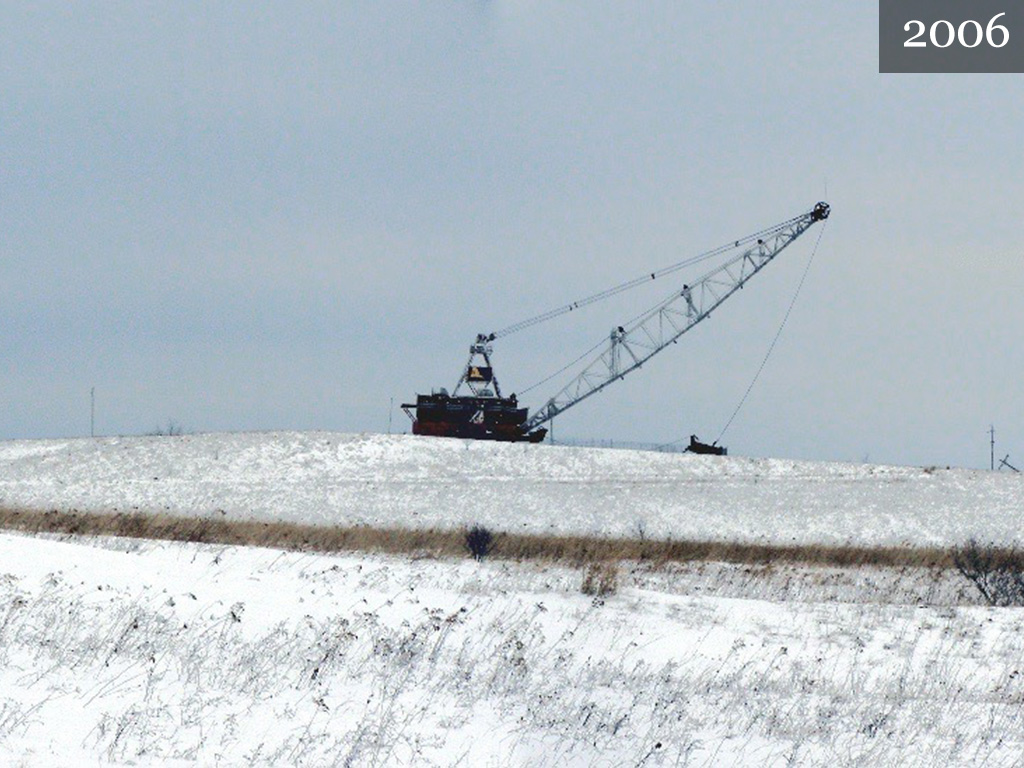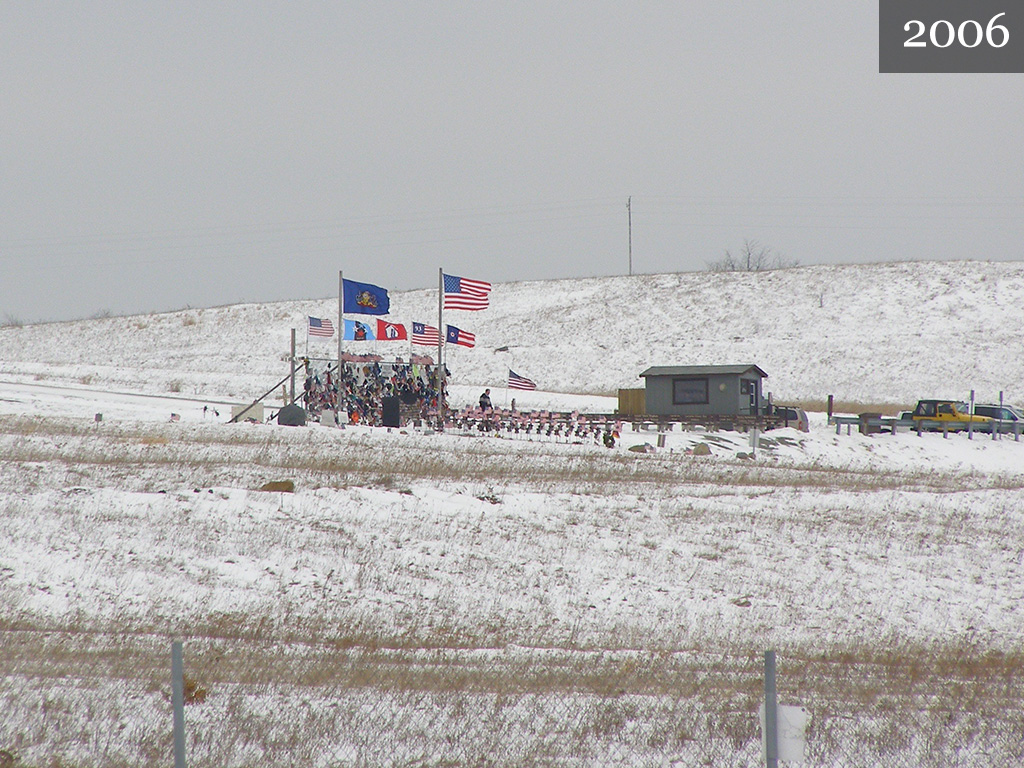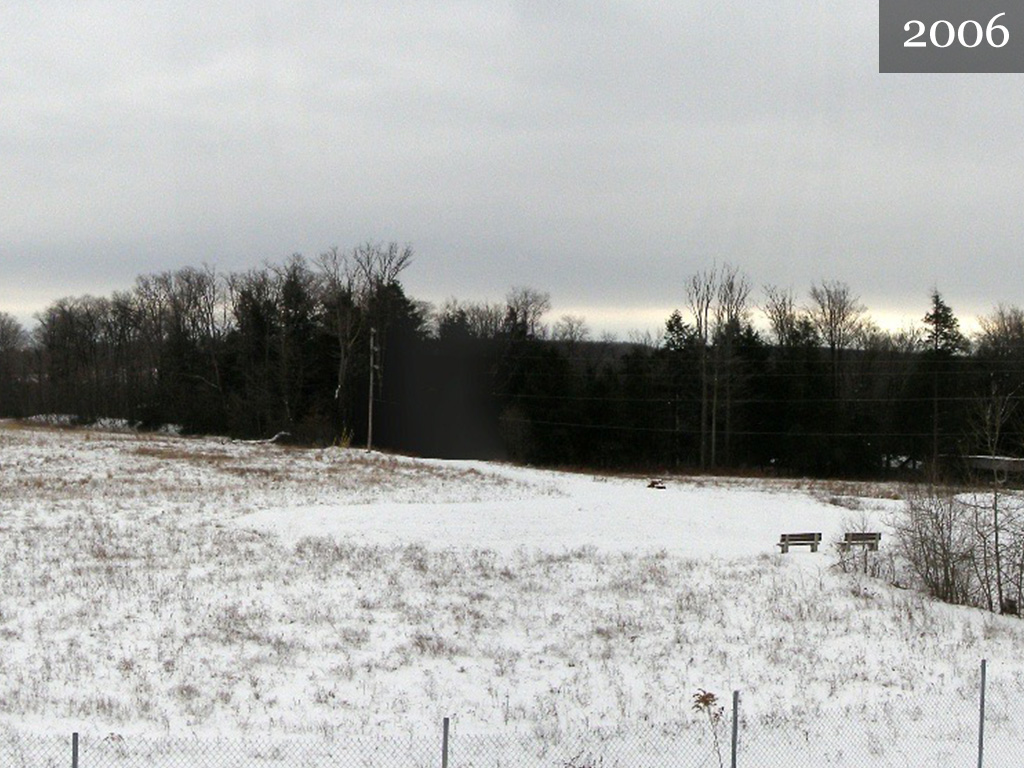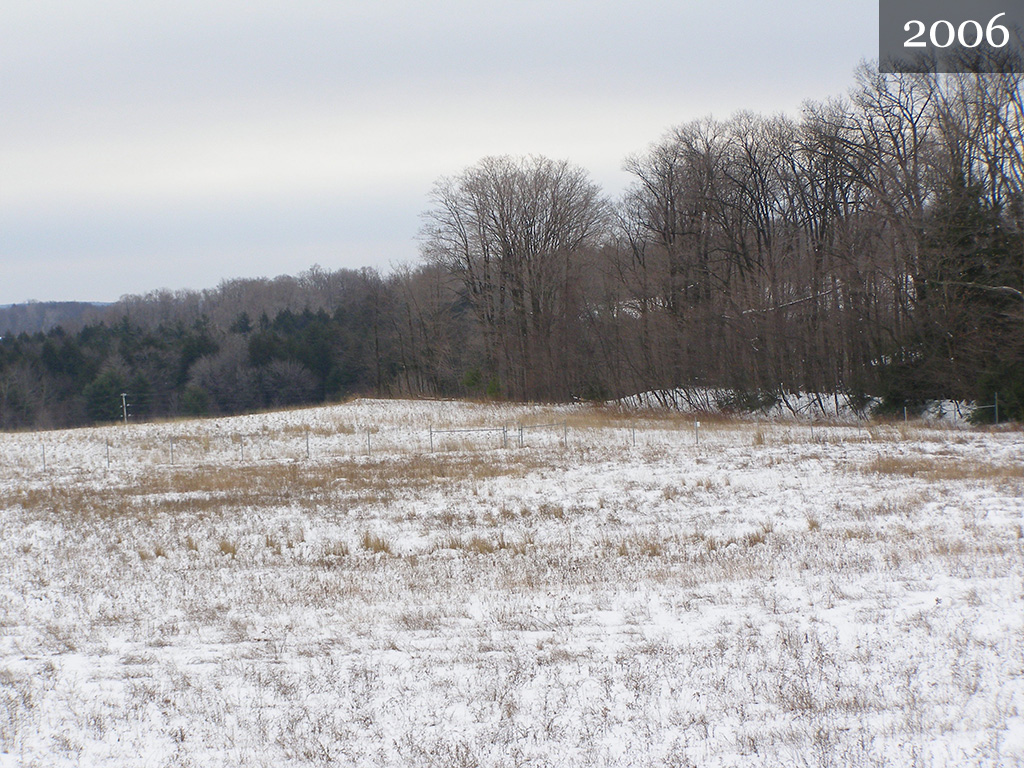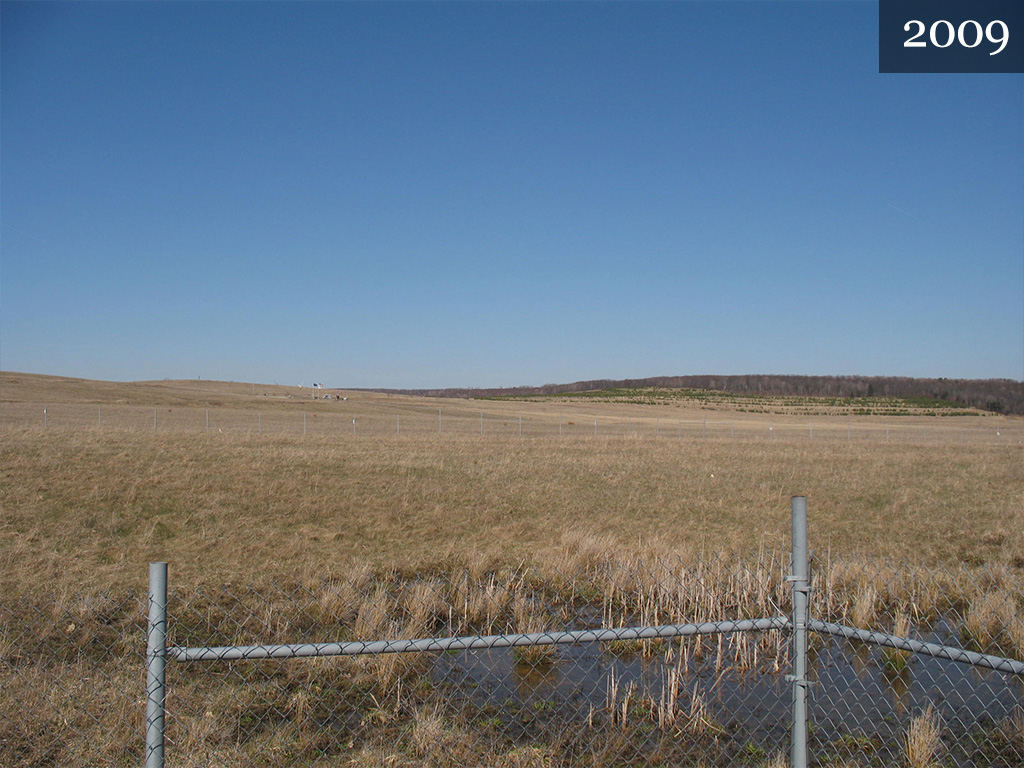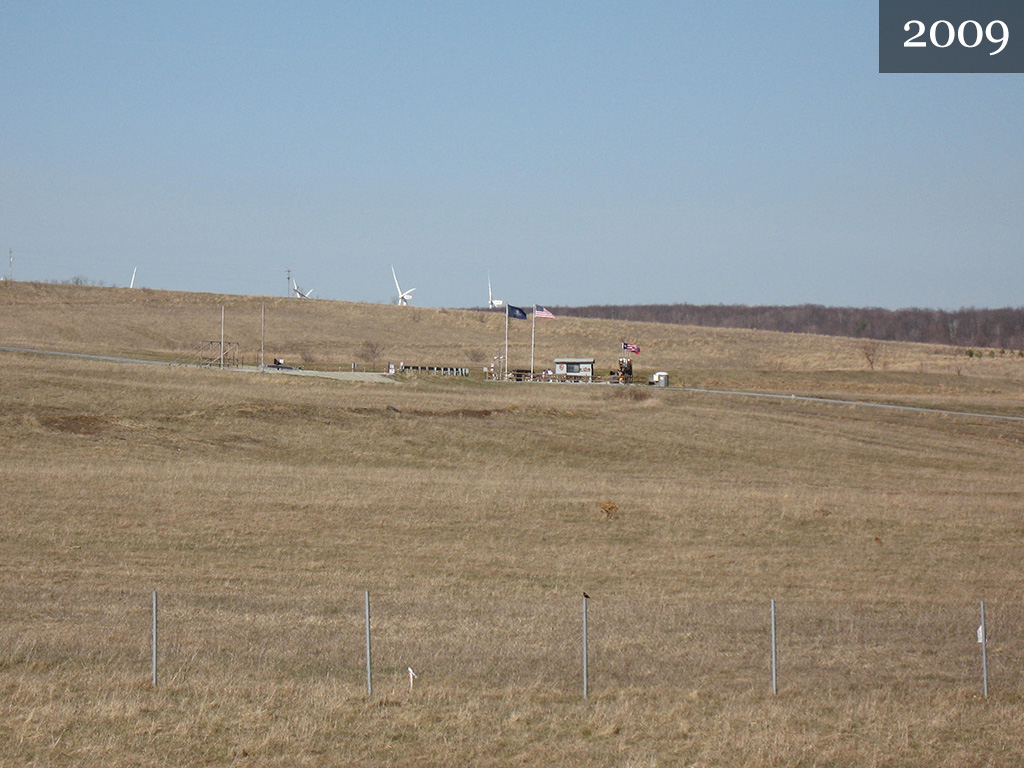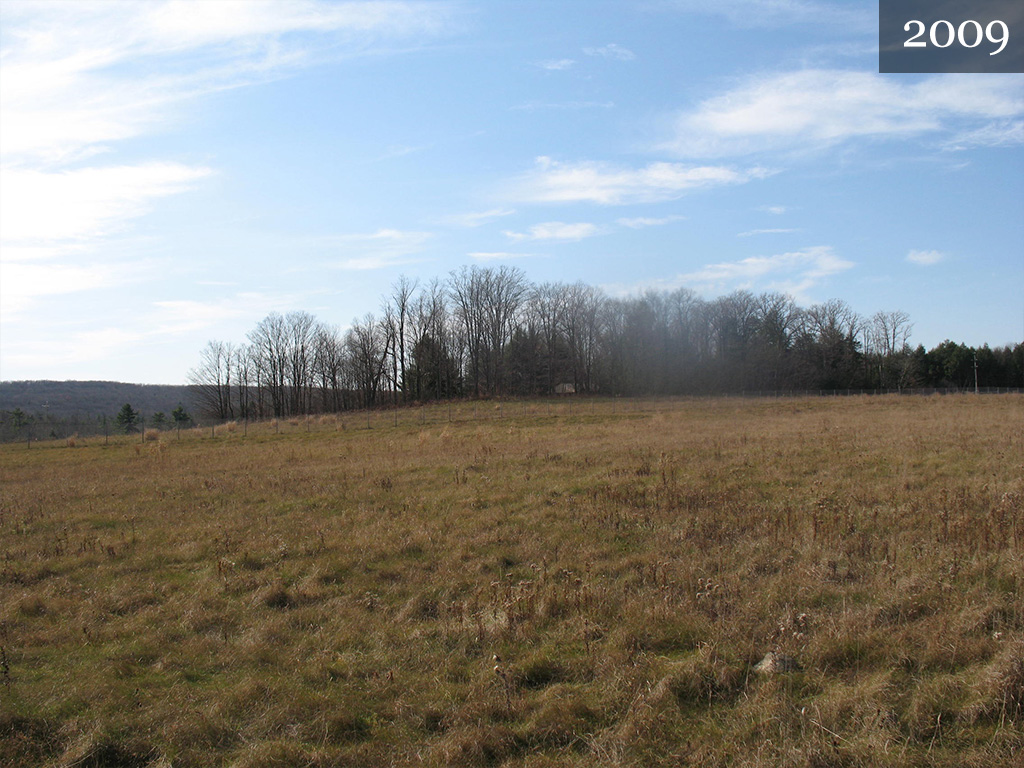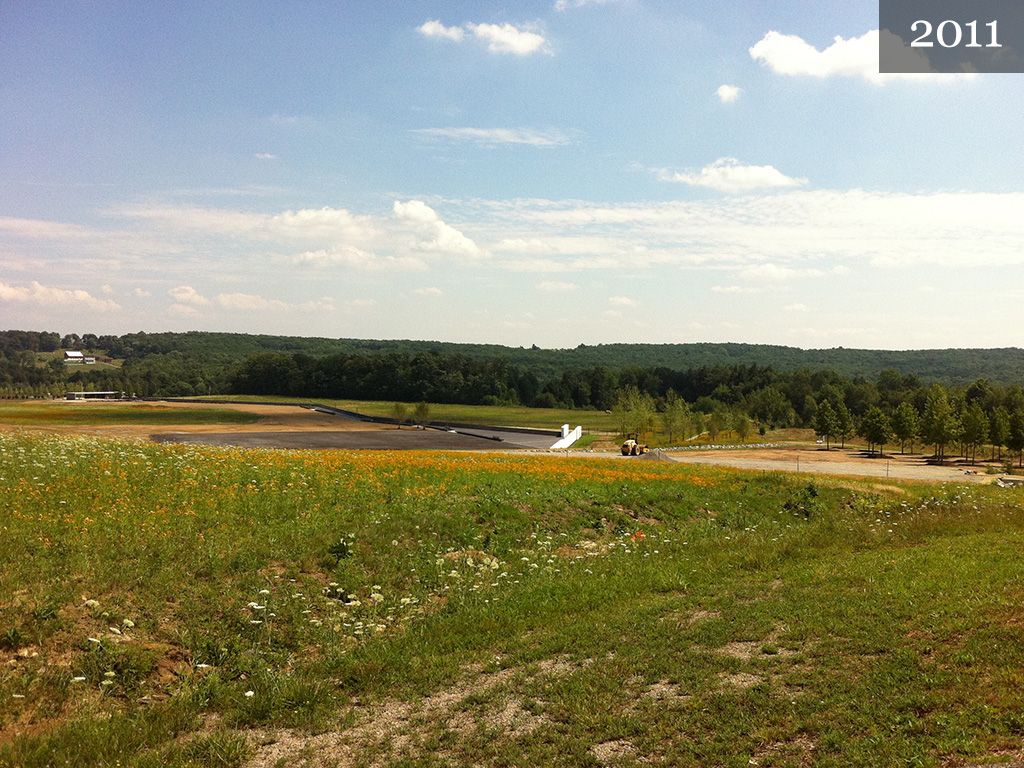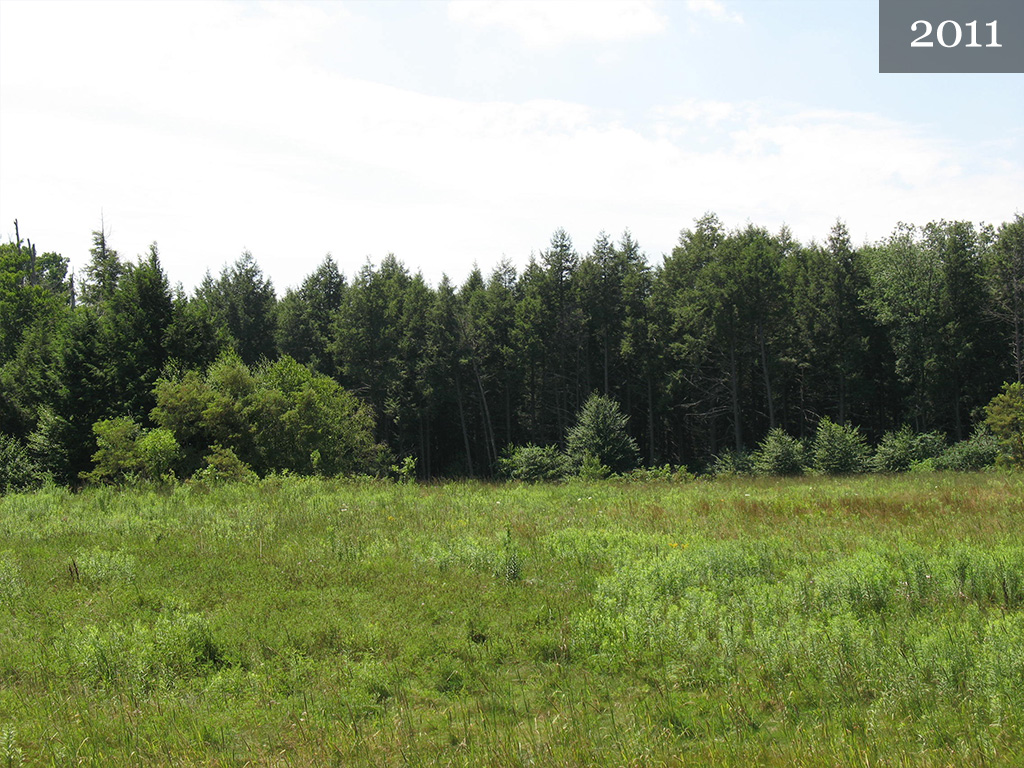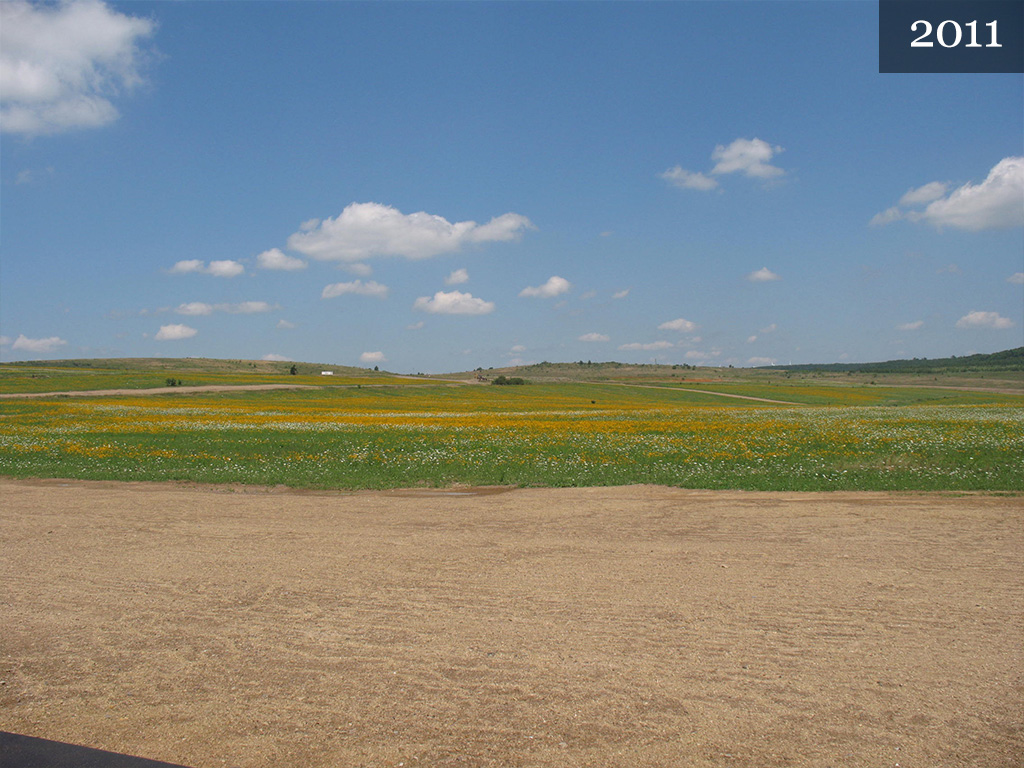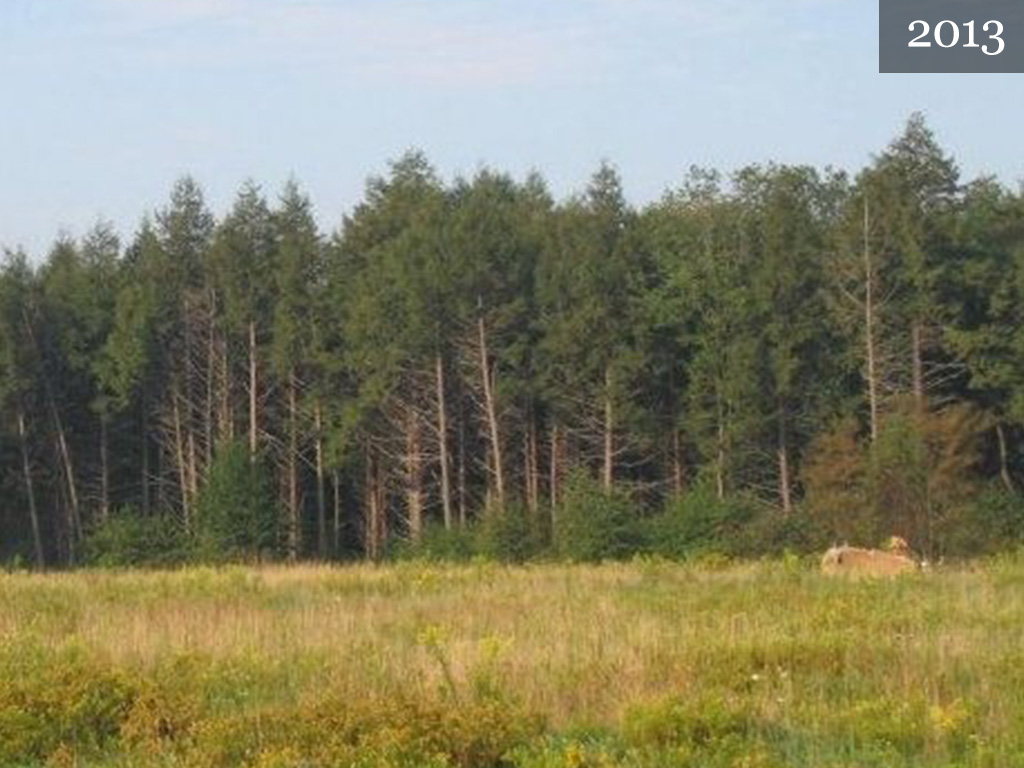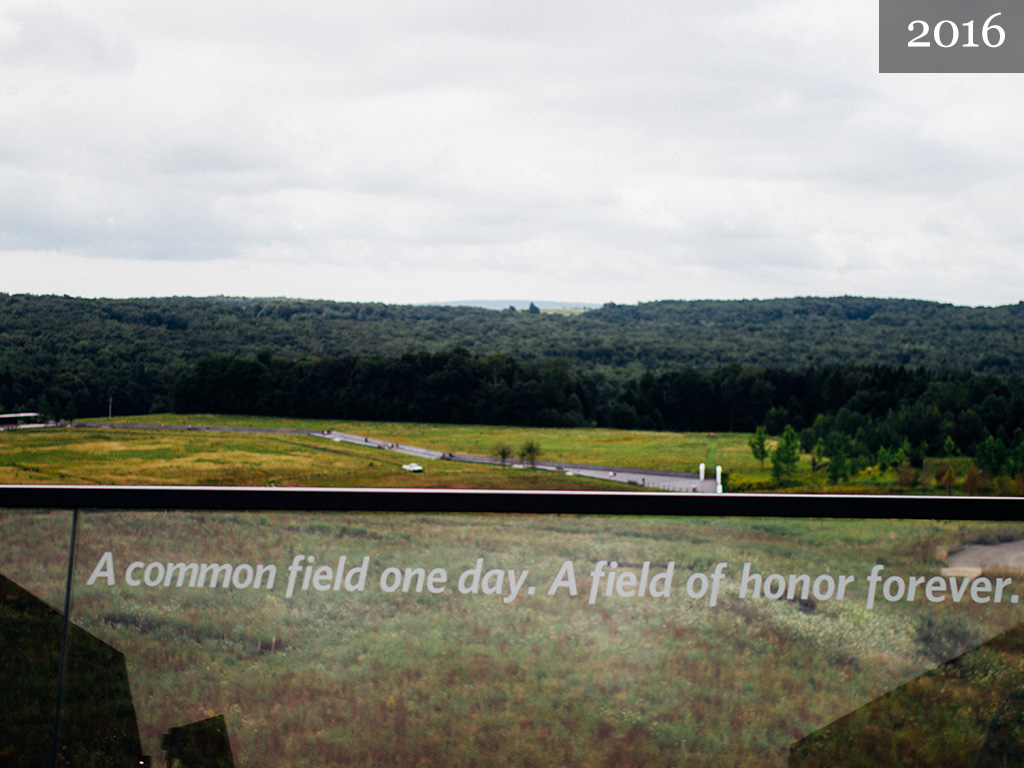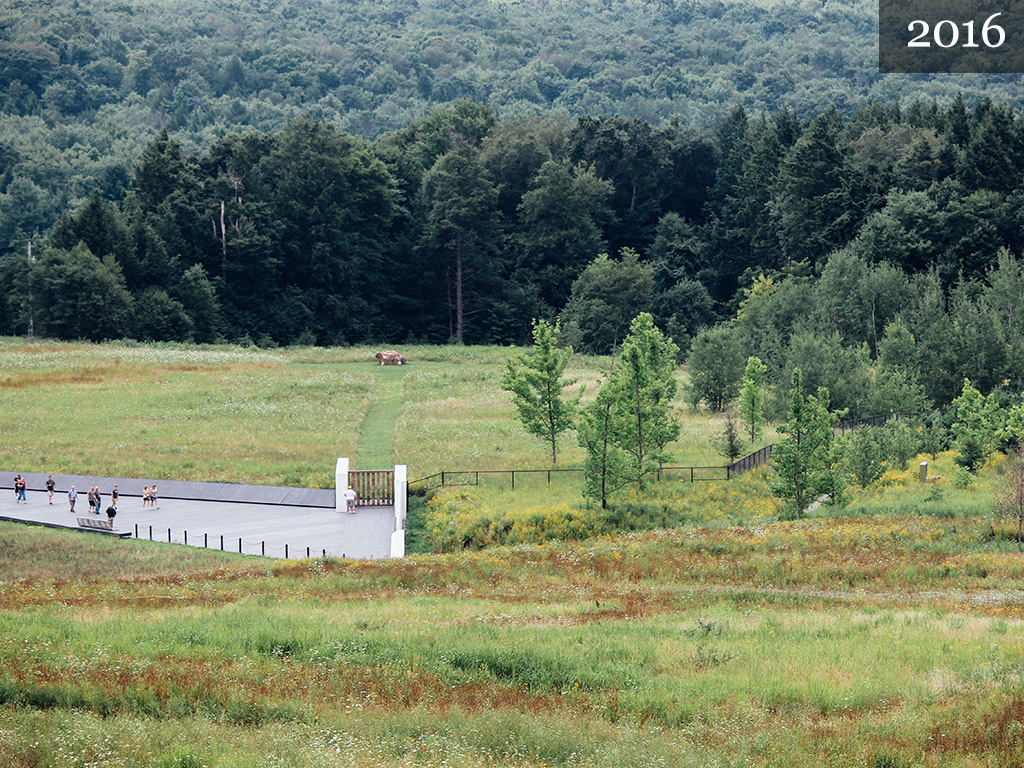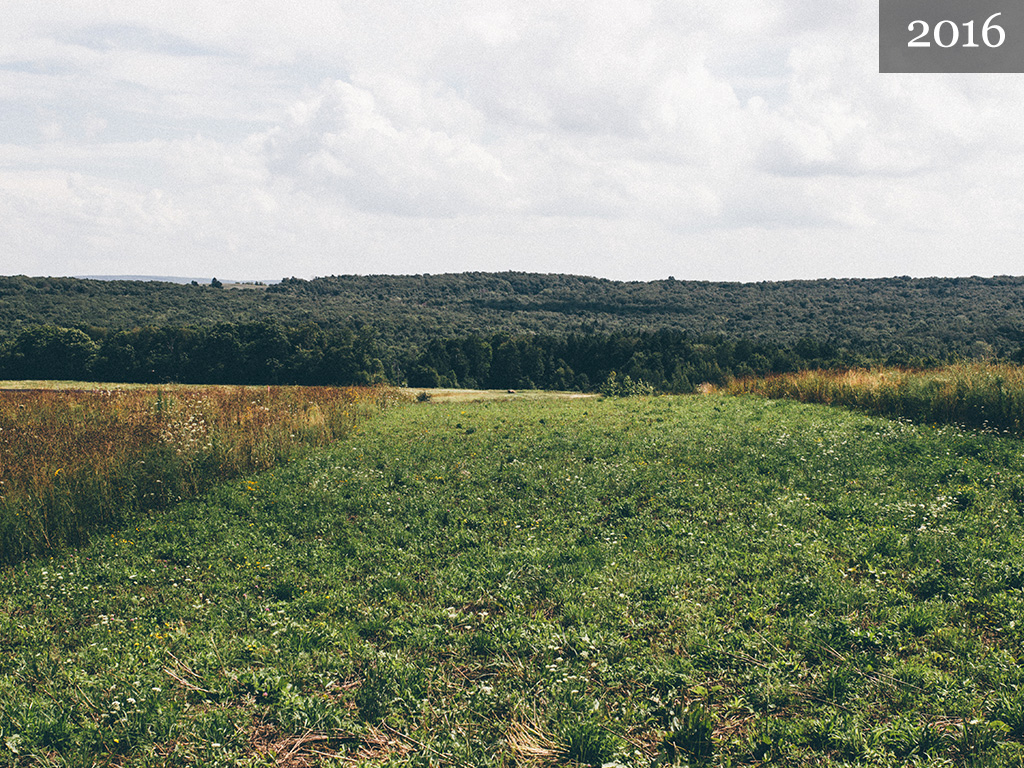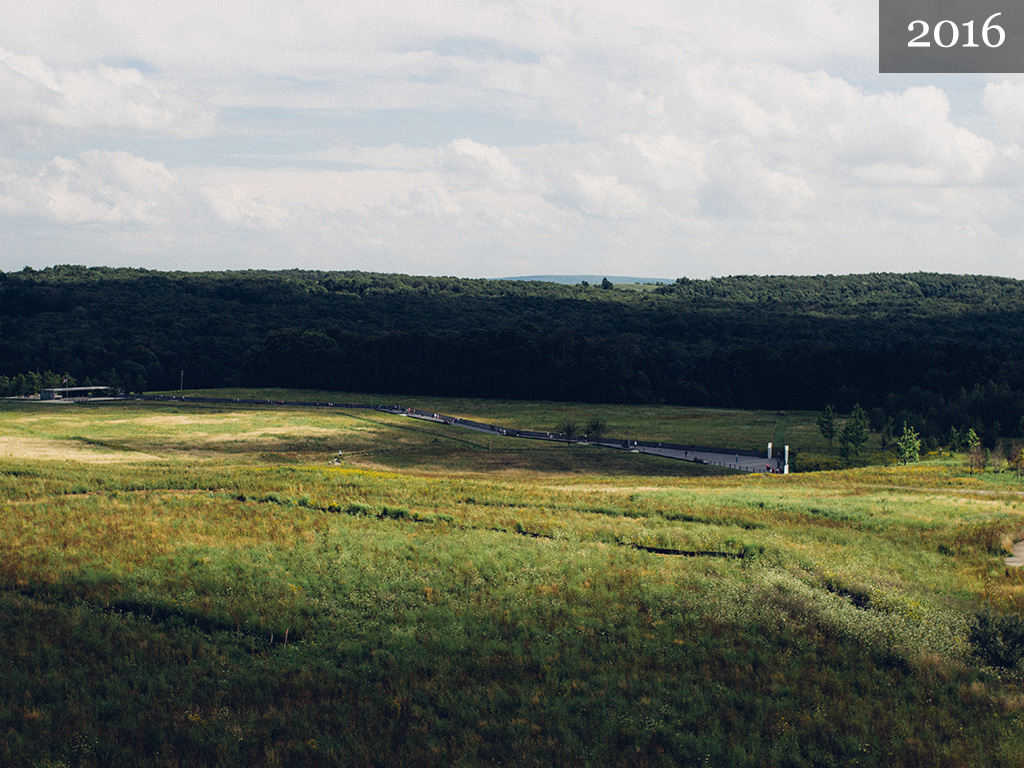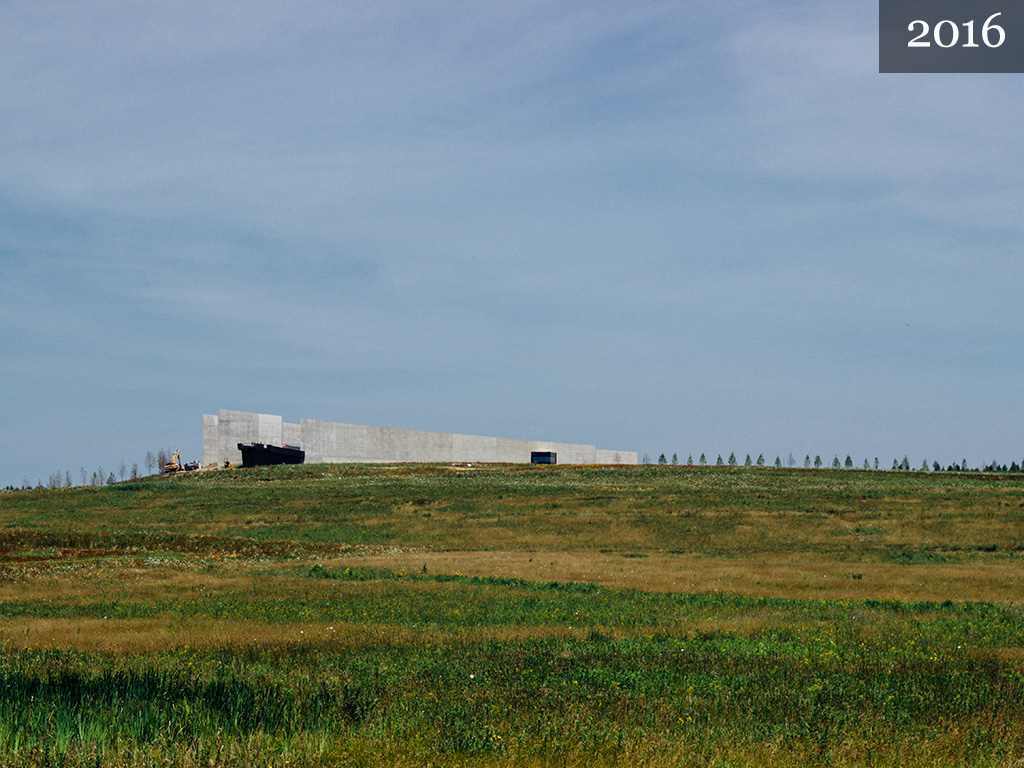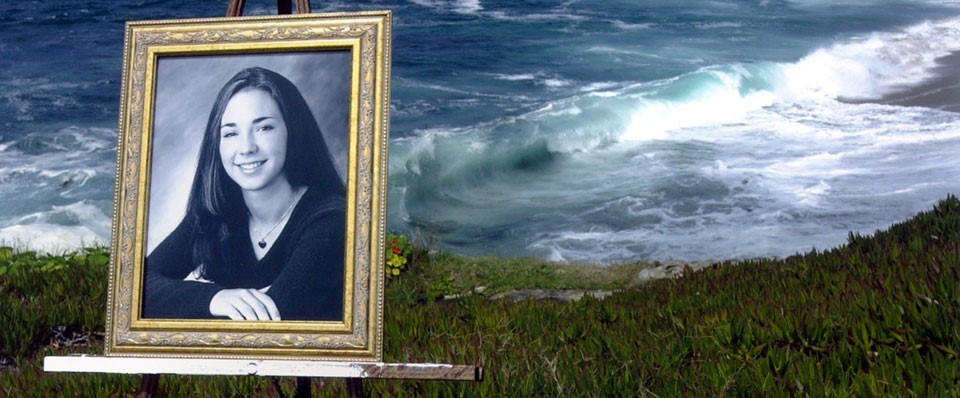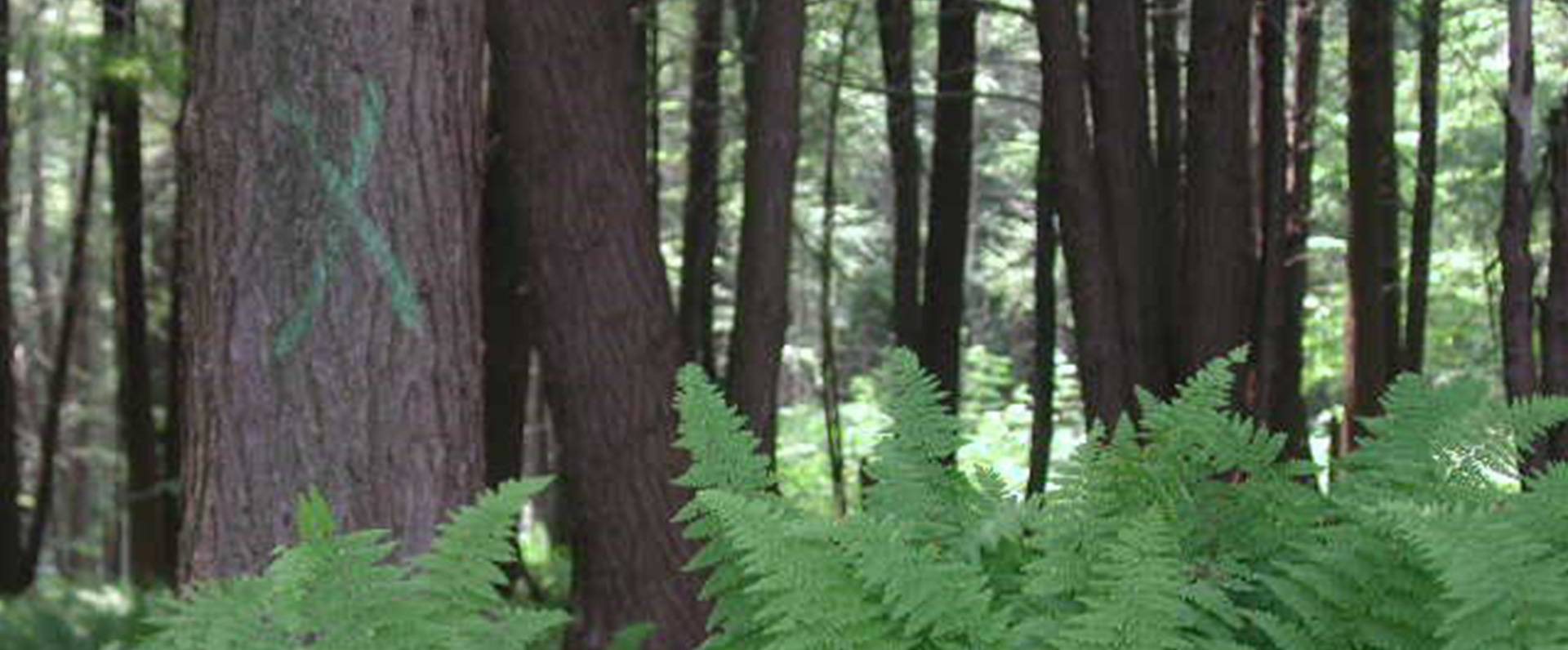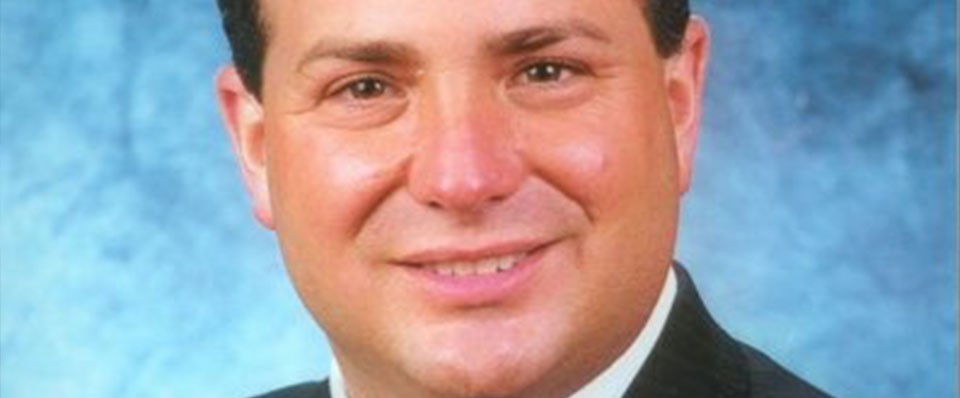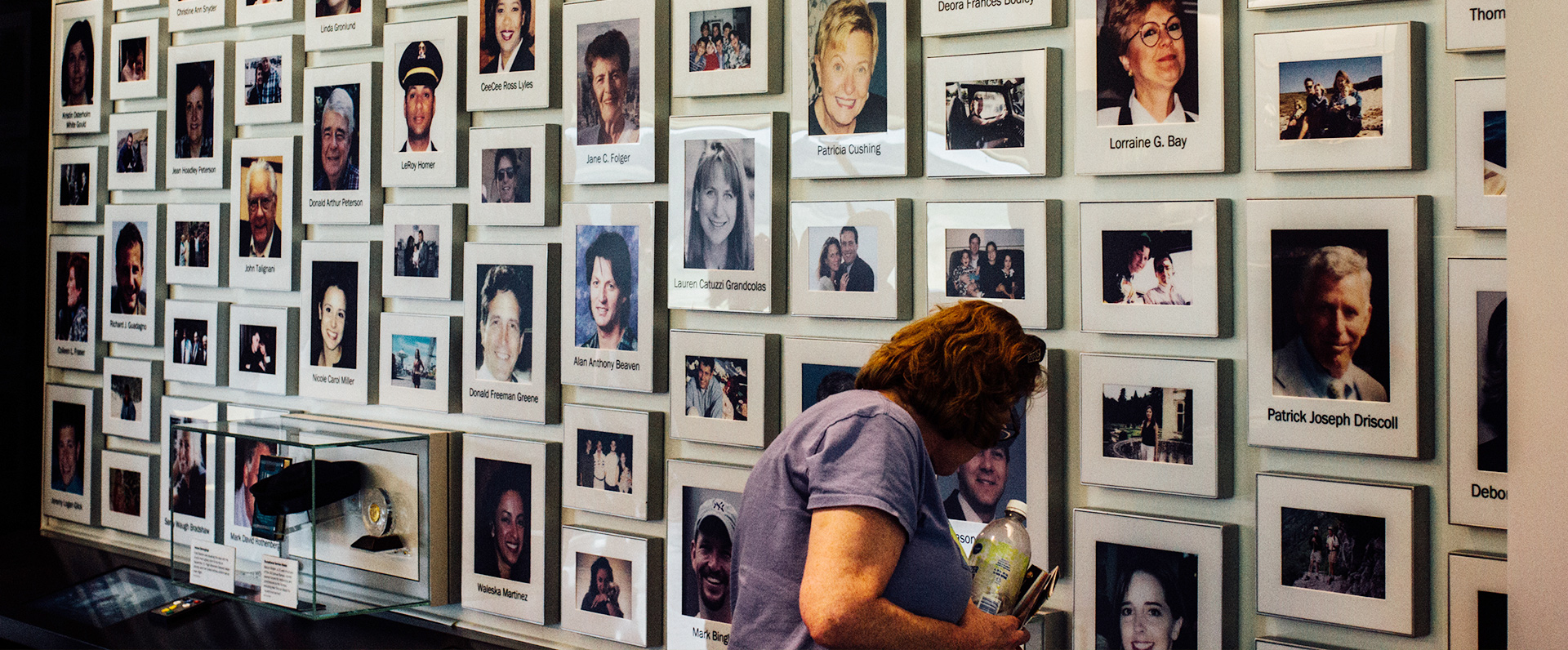Driving along Route 30, there’s a spot near the Bedford-Somerset county line where the Allegheny Mountains’ lush green appears to turn blue.
To see it, you have to visit a well-known vantage point on a bright summer day and look across the valley as the range stretches into Maryland and West Virginia.
You’ll follow the Lincoln Highway as it twists and turns through the mountains, surrounded by landscape so still that your eyes are drawn to slow-turning wind turbines in the distance.
One day, 15 years ago, this quiet beauty was shattered not far from here by one of the darkest days in the country’s history.
The first reminders are not far down the road:
“Flight 93 National Memorial — four miles ahead.”
People have been finding their way to the Flight 93 crash site in Somerset County for nearly 15 years.
They come here to pay their respects to the 40 passengers and crew members on board United Flight 93 who died during the September 11th, 2001, terrorist attacks
They come here to remember the heroism shown in the final minutes before the last of the four hijacked airliners crashed in a field in Stonycreek Township at 10:03 a.m. on that horrible morning.
Some of the passengers and crew mounted a desperate attack against the four terrorists, after coming to the realization through phone calls to loved ones and an Airfone operator that this was part of a coordinated suicide mission.
Their effort to take back the cockpit stopped the airliner from hitting what’s believed to have been its intended target — the U.S. Capitol.
Sunday will mark the 15th anniversary of that day.
Over the course of this year, an estimated 500,000 people are expected to visit the Flight 93 National Memorial, including Denise Hall-Burton and her two children.
They traveled from Pittsburgh to see the site for a second time.
“These were people who within 20 minutes, figured out what was happening and within nine minutes came up with a plan for what they were going to do,” she says. “That’s amazing. They’re selfless. They’re brave. They’re heroes.”
“The 40 heroes” is a phrase used almost reverentially here.
But, the passengers and crew are known as something else to a handful of others who make the trip.
Son.
Daughter.
Wife.
Husband.
Brother.
Sister.
While only one of the passengers and crew hailed from Pennsylvania, family members make regular visits to the site. It’s been that way since September 12, 2001.
Many just want to visit their lost loved ones and make sure the legacy of the men and women who died will not be forgotten.
One of them is Debby Borza, who is intimately involved with this out-of-the way place.
Her daughter, Deora Bodley, forever a 20-year-old college junior-to-be with a tattoo of a shooting star, was the youngest person on board the doomed jetliner.
Borza has been a familiar face, since June of 2002, as the crash site evolved from a scarred field into a national memorial.
She’s quickly greeted with a smile and a hug from a National Park Service ranger.
It’s windy here as usual as Debby makes her way along the Memorial Plaza with a friend.
Off to the left, in the distance, is the actual spot where Flight 93 met the earth at 560 miles per hour. It’s now marked with a large boulder.
Two smiling children go by and catch Borza’s eye — the little girl, in particular.
“Stanford University. Little t-shirt on her. Skipping and running. How sweet,” Debby muses. “Deora went to a basketball camp at Stanford. So, isn’t it funny I see a little Stanford t-shirt on that little girl?”
A little bit further, the quarter of a mile walk ends in front of the eight-foot tall Wall of Names.
“I’m going to go say, ‘Hi’ to Deora’s name. She’s right there.” Debby kisses the engraving and wipes the name clean. “Hi, baby girl.”
She peers through the opening between the two slabs of granite. “I always look through here because I like to see the flowers.”
Deora made a difference everywhere she went, Debby has said.
She remembers her as a bright light, who was dedicated to volunteer work with an animal center, the Special Olympics and tutoring elementary kids in reading.
Borza walks along the memorial, gazing at the 39 other names and the tributes visitors have left behind. She mentions a little tidbit about each one to her friend.
This is part of her routine when she visits.
At the end of the wall, she unhooks a heavy black chain blocking the gravel pathway to the crash site itself.
“We had a lot to live up to as next of kin to these 40 amazing people. So, I think we just kind of dug in and did the best we could do for those that we love dear,” Debby says, while glancing at the flowers doting the landscape. “Always having in mind, long after we’re gone, that the story lives on for those who visit here.”
Within minutes, Borza is standing in front of locked gates that restrict access to all but family members and park service personnel.
The security fence has surrounded the site since the crash.
She considers what’s on the other side to be sacred ground.
Debby opens the gate and with her friend, steps through it.
This is where Deora’s mom is most comfortable.
Borza wasn’t always comfortable with the thought of making her daughter’s final resting place a national memorial.
But, her views evolved over time.
“After all, her grief didn’t have a chance to remain very private.
“It is a very tough personal journey. To give up my daughter? To the public? To turn her life over to people who never really knew her?” she asks. “I think what it was is then if they never knew her and now they have an opportunity to know who she was, how do I want the story told and who would be best?”
As Debby speaks, her matter-of-fact tone turns to something else — a mix of strength and resolve.
“No matter how much they know about her. They can never say, ‘I was her mother,’” she said as her right fist firmly taps her heart. “Only I get to say that. So, that’s what I hold dear. The rest of Deora, I now gladly give her away to anybody and everybody who’s interested, who wants to name their girls after her, to whoever wants to do community service work. Anything they learn about Deora that they want to take on for themselves, that makes me happy.”
Her devotion to this quiet field teeming with waist-high grass, woodlands, ferns and wildflowers has a singular focus: the lessons of what happened here should never be diminished or forgotten.
“I would love for people who come here to find themselves in one of those 40 on board. I would like them to be in the visitor center and be curious about, ’Who is this Jason Dahl? Oh…he was..you know…the pilot. Well, I was a pilot or I would love to learn how to fly. What was his life like?’” she says. “Find some relationship between themselves and those on board, so that people walk away knowing they can be just as courageous whenever courage is needed.”
Calm.
Peaceful.
Beautiful.
That’s how Borza describes this place as she looks out into the 60-foot tall hemlock trees — some still scarred from the crash with visible green and red “Xs” spray-painted during recovery efforts.
Now, Debby’s locking up — like she has countless other times through the years.
She wants to be on time for the dedication of 450 red maple trees planted along the walkway encircling the site.
Having at least one Flight 93 family member on hand to say thanks is important to her.
But, her work on behalf of Deora — who would be in her mid 30s today, and the other 39 innocent people who had their lives taken from them — isn’t quite done.
Debby is hoping to see the 93-foot tall Tower of Voices with 40 individual wind chimes built.
It’s the final step in making the National Memorial complete.
“For me, it needs to just be there. Without that piece, the memorial is not complete and that just wouldn’t sit well with what happened here and why people come here for some kind of peace or completion or something,” she says, motioning toward the boulder. “The families have been a part of the building of this memorial since the beginning and until that piece is done, the families will be deeply involved in this memorial.”
Right now, September 11th, 2018, is the goal.
Then, Borza thinks, it’ll be time for the next generation to watch over the legacy of Flight 93.
While family members like Debby Borza prepare to dial back their involvement in preserving the legacy of Flight 93, the National Park Service will continue to grow its role as caretaker of the site.
As with all parks, historic sites and memorials within the system, the NPS has to make sure it keeps each place relevant and alive.
A quarter of all Americans were too young to remember what happened on that dark day 15 years ago.
Keith Newlin is the deputy superintendent of the National Parks of Western Pennsylvania. He’s been involved with the memorial process dating back to when discussions first began in late 2001-early 2002 on how to memorialize the site.
“I think the challenge for this site is that this is the end of the story. This is not like a battlefield that you can see that folks are used to with Civil War battlefields,” he says. “So, you have to really lay out the path and what happened there. We’re fortunate because this park developed much faster than other parks developed. So, we do have a reservoir of knowledge that we can help people understand that. We have a number of oral histories. We have a number of individuals who know this site well.”
Newlin says he would like people to come away from their visit with a sense of leadership and teamwork.
“They need to understand that as a country, we can make decisions. That we can in a short time frame make important decisions. That we can work together,” he says. “I think that’s what Flight 93 tells me every day. They wanted to live, so they took action. There are a lot of leadership lessons there.”
Joey Nacke of New Hope, Bucks County, would have been one of the leaders on Flight 93 that day.
His cousin Patrick White is convinced.
Louis “Joey” Nacke II liked to take care of things himself, White said, gazing across the field toward the crash site more than 5.5 football fields away.
His remains and personal effects were found in the area where debris from the cockpit was located.
“I think even in those final minutes, there was probably a recognition that maybe it was going to be a stalemate,” White says. “The evil guys weren’t going to win and the most the good guys were going to do was take them down with them.”
Patrick is a land use attorney in Naples, Florida. He spent several years working on deals to acquire the properties that make up the 2,200 acre park.
“Whatever the role was, my words were pretty simple,” he said, recalling his message to Joey’s brother, Ken. “Whatever you need, I’ll do it.”
The site looks different now than it did in the fall of 2001.
It was once a barren area due to strip mining for coal. For many years, a huge dragline crane sat in the distance and the Rollock scrap yard overlooked the site.
Not anymore.
The dragline is gone and the fields are dotted with trees planted over the years by volunteers. The Visitor Center sits along the flight path atop the old scrap yard. The roadway to the Wall of Names cuts a path that didn’t exist the day of the crash. There are about 2.5 acres of reclaimed wetlands included in the park.
“This is somewhere you can identify with what family means and what your life experiences mean when you walk this ground,” he says.
White served on the Flight 93 Memorial Task Force. Like Debby Borza, he’s a member of the Families of Flight 93, as well as the Friends of Flight 93. Almost daily for the last 15 years, White has been involved with something 9/11-related — emails, phone calls or texts.
“I get up every morning. I put on the (Flight 93) wristband, (and) kiss it before I do. I think about certainly my cousin and the 39 other folks on the plane, who all worked together,” he says. “I just ask for a little bit of strength and guidance to be able to do some of what they did in roughly 40 minutes.”
He treasures his time walking the crash site.
“It is the area that we have been privileged to walk, sit quietly, find in quiet time walking through the trees and the woods…even pieces of the aircraft still. It’s the place where you hear your loved ones voice,” he says. “A continuity and a growth we see coming out of the ground reminds you season-to-season, year-to-year, that life is about and for the living.”
With a divisive election looming in November, White hopes the country can draw strength from the passengers and crew.
“Come see it. Feel it. Bring a piece of it home with you. Carry it in your heart, as I do each day,” he says. “Try to renew that. Make that be what your life’s about.”
He notes people should draw strength from what the memorial represents — a place of unity, healing and coming together.
“Forty common people working together under the most extreme circumstances of time and physical challenges can achieve and accomplish just incredible things that, throughout the ages, will be remembered in the history of this country in an equivalent sense of what happened at Lexington and Concord,” he says. “They self-organized. They took over what seemed to be insurmountable odds and turned the tables.”
“By working together, they neutralized a threat that literally could have taken down America’s House.”
As Patrick talks his seven-year-old son, Joseph P. White, runs up and wraps himself around his dad’s legs. White rubs his head gently and kisses him softly.
“We do it for the next generation too,” he says as tears well up in his eyes.
Joseph, named after Patrick’s cousin, was born six months to the day of his namesake’s birthday.
He’ll grow up having never met Joey Nacke, but he will hear stories about his relative’s heroics on United 93.
“He’s a strong-willed little guy, but he’s as sensitive…as creative and somebody you truly can be proud of,” Patrick says quietly. “He honors my cousin in every way.”
White takes a flower from the young boy’s hand with a soft, “Thanks, buddy.”
Patrick joins Borza in seeing the completion of the Tower of Voices as the symbolic end to his efforts to protect the legacy of Flight 93.
“When I hear those 40 chimes…the 40 individual voices speaking in their own unique and ever-changing harmonies, I’m suspecting the message I’ll hear in the back of mind is ‘You’re done. Now you can rest.’”
Additional Links
Passengers & Crew of Flight 93
Learn more about the passengers and crew of Flight 93. Click on the image below to read their biographies.
Flight 93 Education
This September 11th marks the 15th anniversary of the worst terrorist attack on U-S soil. The sites of the World Trade Center in New York, the Pentagon in Washington and the Flight 93 National Memorial in Pennsylvania will hold events in memoriam. While many Americans can consider those events as part of recent memory, WITF News Intern Jordan Brown reports it’s now a history lesson for the next generation.
2001
“When United Flight 93 went down in Somerset County on September 11, 2001, WITF’s Tim Lambert was hurriedly on his way to work. He had no idea that one of the four planes hijacked during the terrorist attacks would crash near a piece of property he owned. Four weeks later, he learned the land outside the tiny borough of Shanksville was a part of Pennsylvania’s version of Ground Zero. In early October, 2001, he toured the site with his father and two family friends and filed this report, which was the first for a reporter from ground still littered with debris.”
2002
One year after hijacked United Flight 93 crashed in a field outside a small Somerset County town, people talked about their struggles to come to terms with what happened and the tens of thousands of visitors that still flock to the site. WITF’s Jen Rehill filed this report in September 2002 on the transformation of the rural hamlet.
2006
Here’s a story Tim Lambert produced in 2006 about the special connection he has to the western Pennsylvania crash site of United Airlines Flight 93. As the nation marked the fifth anniversary of September 11, 2001, he joined some of the victims’ families in a private visit to the land, which is still sealed off from visitors. As a note of disclosure, Lambert once owned part of the crash site. This story gave listeners a glimpse into how this rural area has come to be cherished by family members.
The responsibilities of a county coroner include securing the scenes of local deaths and providing the first context, as surviving relatives begin to cope with loss. This took on an entirely different dimension for Somerset County Coroner Wallace Miller in September, 2001. On the fifth anniversary of the terrorist attacks, the man who controlled the crash site of United Flight 93 for several years discussed how he has few regrets about how he handled it. But, he hesitated to talk about how the massive task affected him personally. In this story from 2006, WITF’s Damon Boughamer reports.
2011
To mark the 10th anniversary of the September 11th attacks, Ken Nacke was on hand for the unveiling of the Flight 93 National Memorial in Somerset County, PA. Ken’s brother, Lou, was one of the 40 passengers and crew who were killed when the hijacked airliner crashed in Stonycreek Township in 2001.
Ken graciously agreed to walk the grounds of the crash site with Tim Lambert a few weeks before the dedication ceremony.
The Flight 93 National Memorial in Somerset County has been 10 years in the making.
On Saturday, September 10th, it will be dedicated and opened to the public. In this story from 2011, WITF’s Mary Wilson offered a sneak peak.

